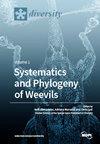入侵攀援棘囊虫的分子证据托。,A.格雷在东欧和中欧
IF 2.1
3区 生物学
Q2 BIODIVERSITY CONSERVATION
引用次数: 0
摘要
采用扩增片段长度多态性标记(AFLP)对原产于北美、外来国欧洲的攀缘瓜类棘囊藻(Echinocystis lobata)进行了遗传多样性和遗传分化分析。包括种群内多样性评估、主坐标分析和分子方差分析在内的各种测试表明,在地理和到达历史上不同的中欧和东欧种群在遗传参数上也存在差异。遗传多样性,定义为多态性AFLP位点的百分比,在区域尺度(罗马尼亚、波罗的海国家和俄罗斯中部人群)范围在28-62%之间(平均为51%),在地方尺度(立陶宛人群平均为52%)非常相似。不同地区种群间(Ф = 0.125, p = 0.001)和地方尺度(不同流域立陶宛种群间,Ф = 0.058, p = 0.010)差异显著。贝叶斯结果表明,在29个地点中存在三个遗传集群,其中罗马尼亚、拉脱维亚、爱沙尼亚和立陶宛北部的种群构成一个主要集群,立陶宛Nemunas河流域的种群构成前一个集群或第二个集群,俄罗斯中部的种群构成第三个遗传集群。总的来说,欧洲的野田葵可能起源于多次引种。伴随着水生生物的有意的人为种子传播可能会对这种遗传集群的概况产生影响。本文章由计算机程序翻译,如有差异,请以英文原文为准。
The Molecular Evidence for Invasive Climber Echinocystis lobata (Michx.) Torr. & A. Gray in Eastern and Central Europe
The climbing cucurbit Echinocystis lobata, native to North America and alien to many European countries, was assessed for its genetic diversity and differentiation across its introduced range of populations by applying markers of amplified fragment length polymorphism (AFLP). Various tests, including an evaluation of the intrapopulation diversity, principal coordinate, and molecular variance analyses, showed that the Central and Eastern European populations differing in geography and arrival history are also distinct in the genetic parameters. Genetic diversity, defined as the percentage of polymorphic AFLP loci, ranged within 28–62% (on average 51%) at the regional scale (in Romanian, Baltic State, and Central Russian populations), and was very similar to this parameter at the local scale (on average 52% for Lithuanian populations). The differentiation was significant among the populations of the regions (Ф = 0.125, p = 0.001) and at the local scale (among the Lithuanian populations of the different river basins, Ф = 0.058, p = 0.010). The Bayesian results suggested the presence of three genetic clusters among the 29 sites, with populations from Romania, Latvia, Estonia, and the northern part of Lithuania comprising one prevailing cluster, populations from the Nemunas river basin of Lithuania comprising either the former mentioned cluster or the second cluster, and populations of Central Russia comprising the third genetic cluster. Overall, E. lobata in Europe has probably originated from multiple introductions. The intentional anthropogenic seed dispersal by marketing accompanied by hydrochory might have an impact on such a profile of genetic clusters.
求助全文
通过发布文献求助,成功后即可免费获取论文全文。
去求助
来源期刊

Diversity-Basel
Environmental Science-Ecological Modeling
CiteScore
3.40
自引率
12.50%
发文量
925
审稿时长
11 weeks
期刊介绍:
Diversity (ISSN 1424-2818) is an international and interdisciplinary journal of science concerning diversity concept and application, diversity assessment and diversity preservation. It is focused on organismic and molecular diversity. It publishes reviews, regular research papers and short notes in the regular issues. Related news and announcements are also published. Our aim is to encourage scientists to publish their experimental and theoretical results in as much detail as possible. Therefore, there is no restriction on the length of the papers. Full experimental details must be provided so that the results can be reproduced.
 求助内容:
求助内容: 应助结果提醒方式:
应助结果提醒方式:


